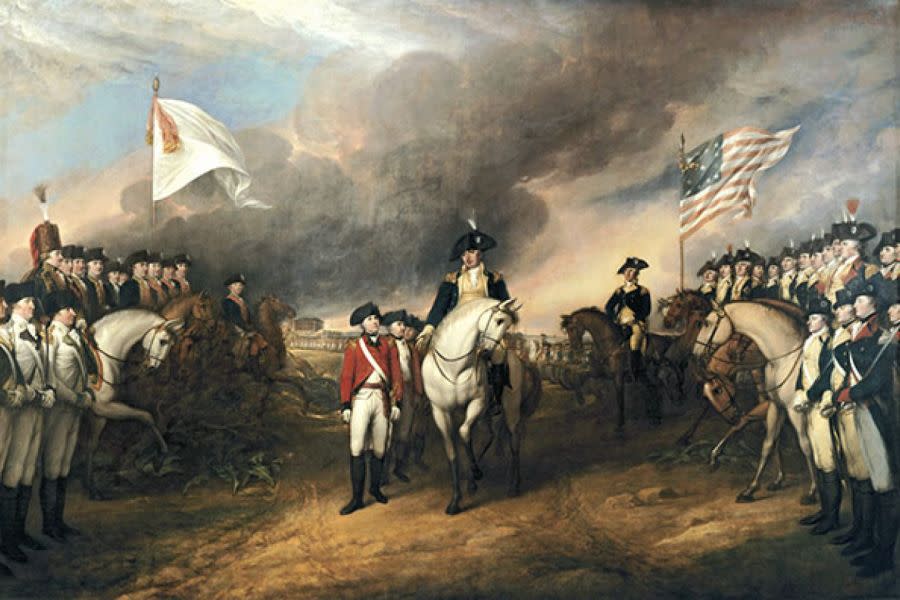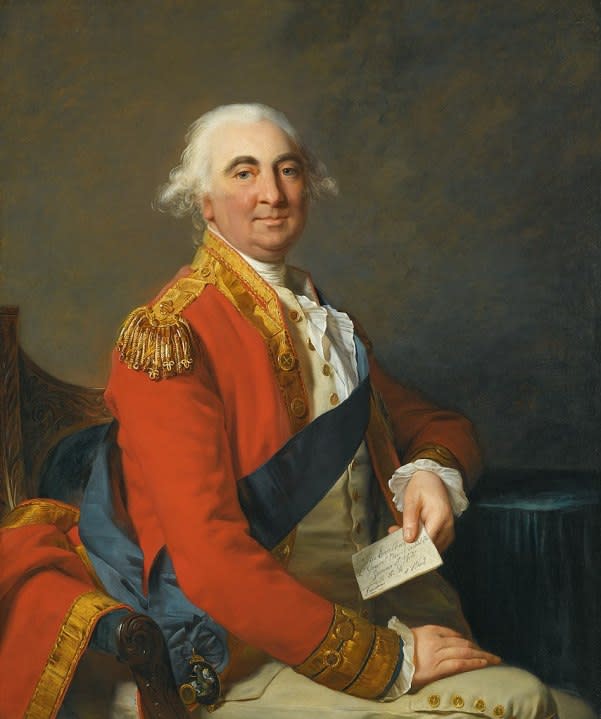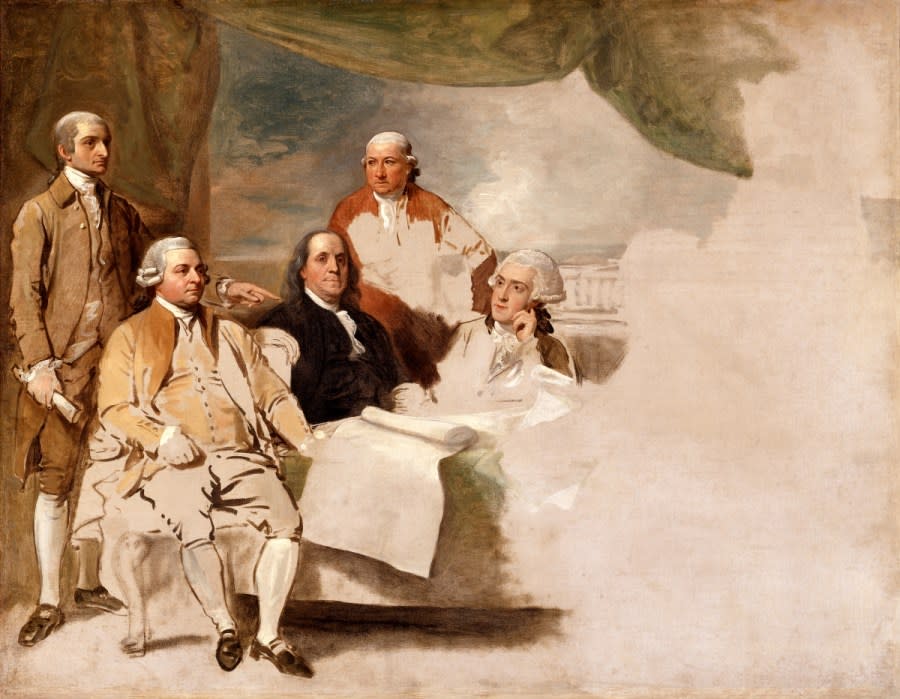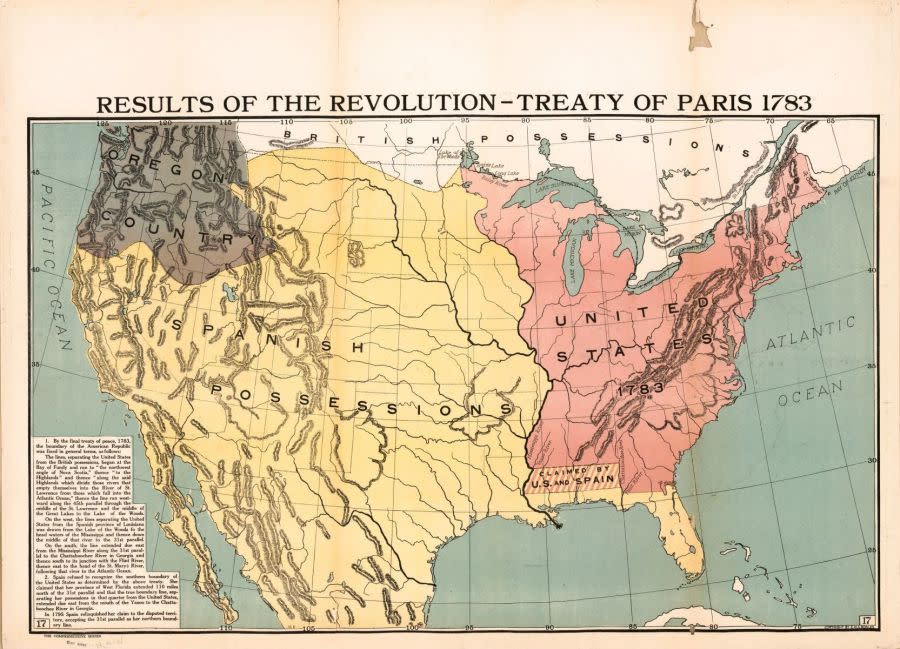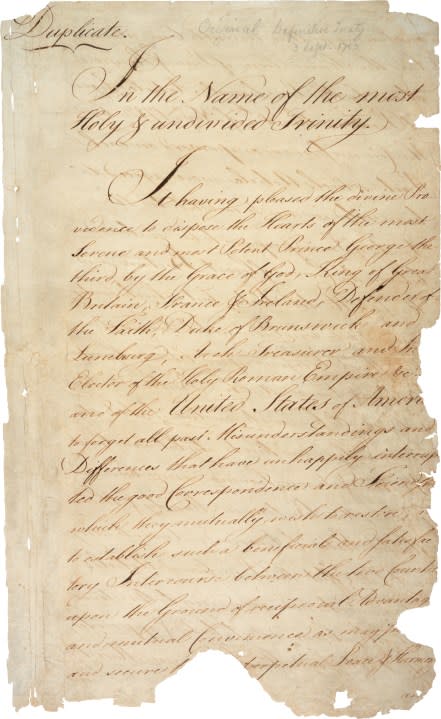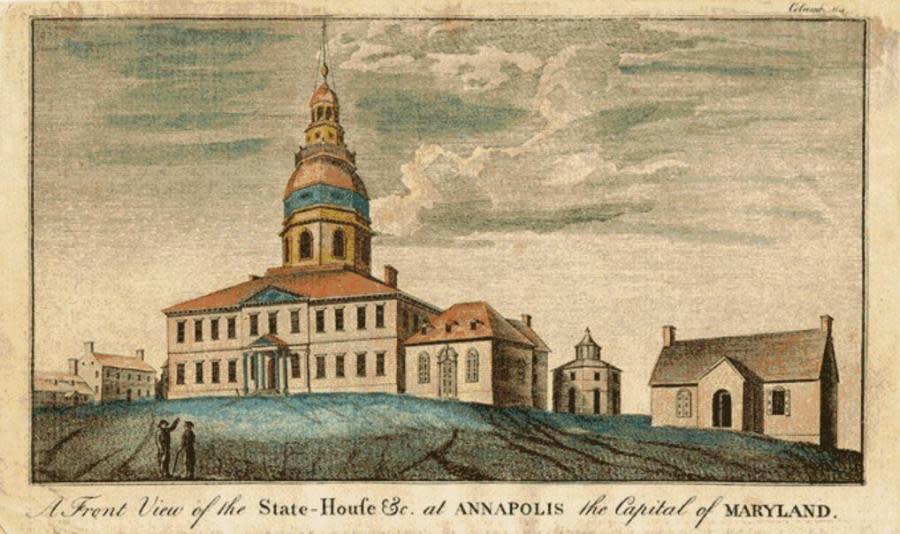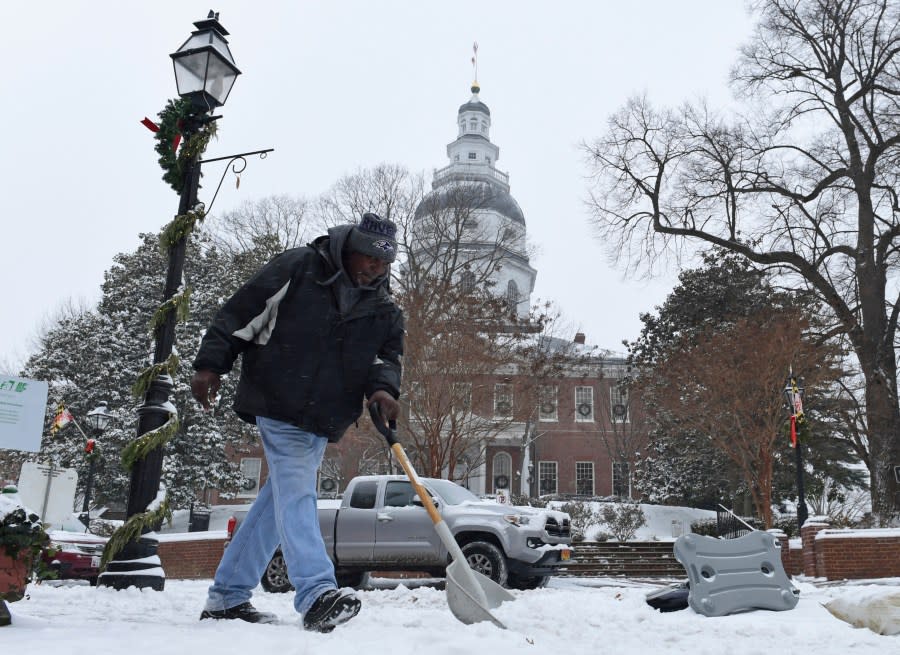It’s Ratification Day! Who, what, when, where and why?

- Oops!Something went wrong.Please try again later.
- Oops!Something went wrong.Please try again later.
- Oops!Something went wrong.Please try again later.
- Oops!Something went wrong.Please try again later.
- Oops!Something went wrong.Please try again later.
(WHTM) — It’s 1781 in Yorktown, Virginia, a British army under the command of Major General Charles Cornwallis, 1st Marquess Cornwallis, surrenders to a combined force of Americans under Major General George Washington and French troops commanded by General Jean-Baptiste Donatien de Vimeur, comte de Rochambeau. The Revolutionary War is over!
Surrender of Lord Cornwallis by JohnTrumbull (U.S. Capitol Rotunda) William Petty, 2nd Earl of Shelburne, by Jean Laurent Mosnier (Wikipedia) Treaty of Paris, by Benjamin West 1783. From left: John Jay, John Adams, Benjamin Franklin, Henry Laurens, and William Temple Franklin. The picture is unfinished because the British commissioners refused to pose. Map of the United States, 1783 (Library of Congress) First page of the Treaty of Paris (National Archives) Last Page of the Treaty of Paris (National Archives) Font view of the state house at Annapolis, Maryland Collester Smith of Annapolis, Md., shovels snow near the state capitol in Annapolis, Md., Thursday, Jan. 4, 2018, during a winter storm. (AP Photo/Susan Walsh)
Well, not exactly…
Get daily news, weather, breaking news, and alerts straight to your inbox! Sign up for the abc27 newsletters here
For there to be peace, there must be a peace treaty. Negotiations wouldn’t begin until 1782, following a change of government in Britain. The new Prime Minister, Lord Shelburne, realized the United States could become a valuable trading partner and was willing to see the United States achieve independence.
New details on historic Revolutionary War POW camp in York County
Negotiations began in Paris, in April of 1782. The American negotiators were John Adams, Benjamin Franklin, John Jay, and Henry Laurens. The British negotiators were David Hartley and Richard Oswald. Negotiations went on through the summer, settling matters like the borders of the new country, fishing rights on the Grand Banks, exchange of prisoners of war, and most importantly, Britain’s acknowledgment that the United States was “free, sovereign, and independent”.
Most of the terms were settled by the end of 1782; but the actual treaty was not signed until September 3, 1983. Then the treaty was shipped to America for ratification by the Confederation Congress.
Veterans at Revolutionary battlefield dig find camaraderie
Congress, at the time, was meeting at the Maryland State House in Annapolis, Maryland. (This is the same building that’s in Annapolis today; the oldest state house in the United States. Independence Hall in Philadelphia was the Pennsylvania State House before being promoted to Cultural Icon.)
But when Congress met on December 13, 1783, to ratify the treaty, the weather was against them. The winter of 1783-1784 smacked the country with extreme cold coupled with ice and snowstorms. Only seven of the 13 states had enough representatives present to conduct business.
Ceremony in Carlisle honors those who died in the Revolutionary War and wars since then
Not until January 14 did enough delegates reach Annapolis. The vote was taken, the Treaty of Paris was ratified, the Revolutionary War was officially over, and the United States of America was truly, in the eyes of the world (or at least the European powers), an independent nation.
To read the Treaty of Paris, click here.
For the latest news, weather, sports, and streaming video, head to ABC27.
